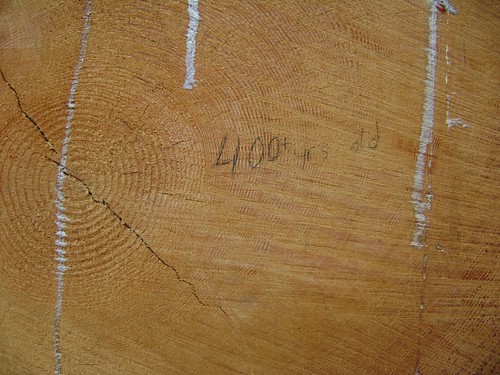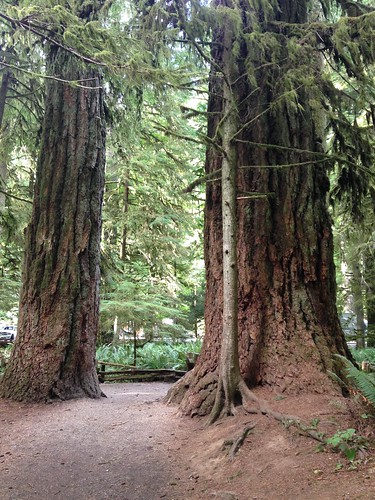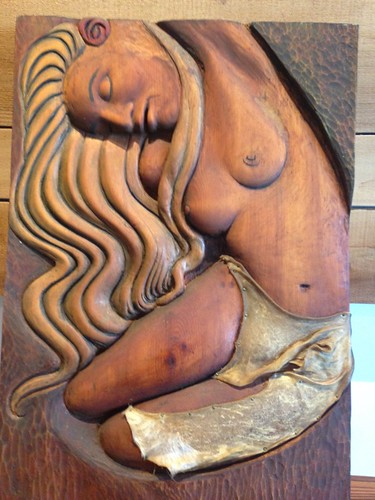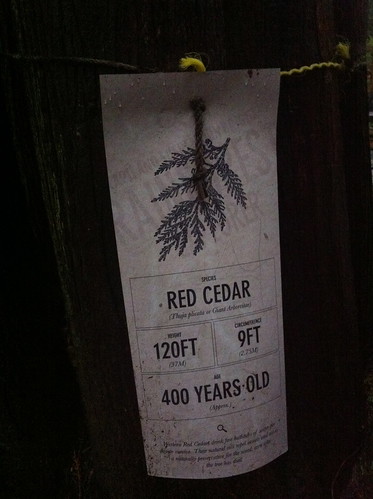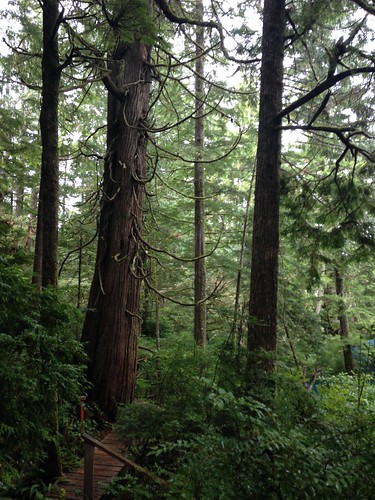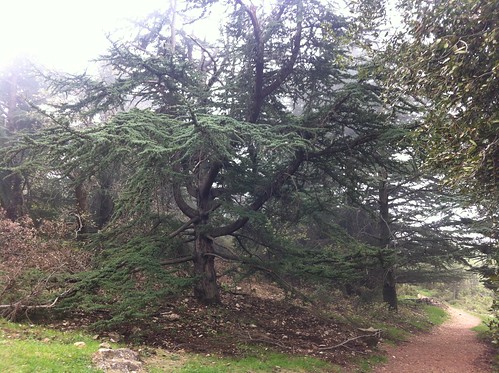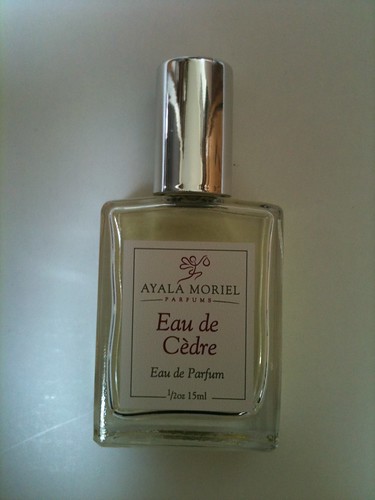Study in Cedar
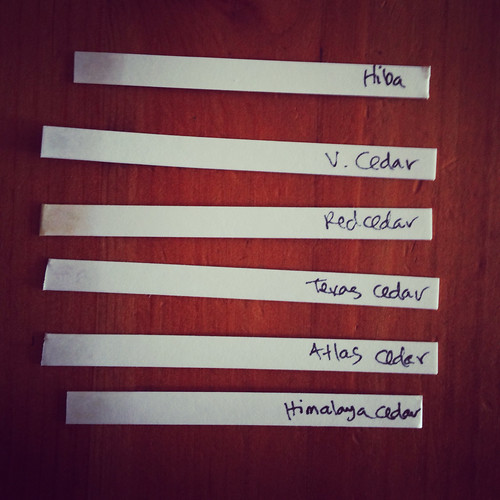
A study in cedars reveals the many nuances and variations on a beloved woody theme. While all of them have cedrol as a main constituent*, they smell quite different from one another. First of all, there is a pattern here: true cedars (Cedrus) smell significantly different from the so-called cedars (Thuja, Juniperus, etc.). Let's begin with those:
Atlas Cedar (Cedrus atlantica) is a large fragrant tree that grows on the Atlas mountains and looks exactly like Cedar of Lebanon (Cedrus libani). Atlas cedar has been in use for thousands of years, both as a medicine, cosmetics, incense and perfume. In Egypt it was used to embalm the dead. It is considered one of the earliest incense materials.
The oil is a semi-viscous, clear-yellow liquid with a fine, warm, polished-wood scent. There is a sweetness to it, almost like honey - but also a certain cool element as well, or just an overall feeling of smoothness of a cold pebble. Then there is also a certain animals aspect, not as urine-associated as in sandalwood, but pretty close. It's a very light, subtle base note with mild fixative qualities. It functions in perfume similarly to frankincense - a base note that is very light and non overpowering. It's easy for it to get lost in a composition, so either use large amounts or use only with other lighter notes (such as light florals), and if you're using heavier notes, make sure they are delicately proportioned.
Principal constituents of Atlas Cedar oil (according to Julia Lawless' Encyclopedia of Essential Oils):
Atlantone, cedrol, caryophyllene, cadinene and others.
Himalayan Cedar (Cedrus deodara) are descendents of the Cedar of Lebanon (Cedrus libani). I can't identify any differences between Himalayan and Atlas cedar. Maybe, but just maybe, it is a tiny bit lighter and cooler.
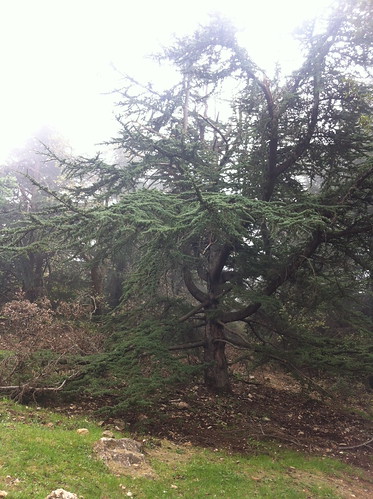
True cedarwood is a very versatile note and blends well with most notes. Try it with other woody notes to create a woody base not for a composition (i.e.: other types of cedar, sandalwood, agarwood, vetiver, muhuhu, West Indian Sandalwood, etc.). It is wonderful with citrus oils (lime in particular), spice oils (cardamom, coriander, ginger) and floral notes (jasemine, rose, tuberose).
In aromatherapy, both true cedarwood oils are the safest to use. They are valued for grounding and entering; Antiseptic; For treatment of oily hair and skin as well as acne, to treat insect bites. True cedarwood oil is astringent, expectorant, and helps to relieve stress. It is best avoided during pregnancy.
Recipe: Aphrodisiac Atlas Mountains Massage Oil
30ml Almond oil (2 Tbs.)
10 drops Atlas Cedarwood
10 drops Sandalwood oil
2 drops Ylang Ylang oil
2 drop Cardamom oil
Virginia cedarwood (Juniperus virginiana) is really the oil from the heartwood of a North American juniper tree. It's not a very tall tree and is slow to grow. There are two subtypes with slightly different habitat, that vary in their size cones, shape of leaves and bark colour: Juniperus virginana var. virginiana, AKA Eastern Redcedar, has larger cones and a red-brown bark. It grows in the eastern parts of North America - west from southern Ontario and South Dakota, all the way down to the northern parts of Florida and the post-oak savannah of Texas. The other type, Juniperus virginiana var. silicicola AKA Southern Redcedar or Sand Juniper, which has smaller cones and orange-brown bark. It grows along the Atlantic gulf coast from North Carolina to Florida and Texas.
The oil from the heartwood of Virginia cedarwood can be either distilled once, producing a dark amber/brown oil, or rectified to produce an almost transparent white oil. Either way, it has the beloved and familiar scent of pencil shavings, woodworking workshops, old furnitures, museums, cedar chest or bentwood box and hamster cages, with a smoky topnote that develops into an almost creamy, precious wood note (not that far removed from sandalwood, even if it is overall much drier and not as creamy) before it evaporates completely. It is a rather fleeting top note, lasting only a day or two on a scent strip. You'll need another long lasting woody note like sandalwood, vetiver or patchouli to fix it and give it a more lasting power.
Principal constituents of Atlas Cedar oil (according to Julia Lawless' Encyclopedia of Essential Oils):
Principal constituents of Atlas Cedar oil (according to Julia Lawless' Encyclopedia of Essential Oils):
Cedrene (up to 80%), cordial (3-14%), cedrenol, and others.
Texas cedarwood (Juniperus mexicana) is intense, smoky, dry-woody, warm and smooth. Reminiscent of an old cedar wood chest and campfires. The non-rectified Texas Cedarwood essential oil is dark amber, and contains solid crystals that can be filtered out. My guess is, that if they were to actually be left in the oil, it will be a longer lasting product. It lasts longer than the Virginia cedar wood, but is still a fleeting top note.
Principal constituents of Atlas Cedar oil (according to Julia Lawless' Encyclopedia of Essential Oils):
Principal constituents of Atlas Cedar oil (according to Julia Lawless' Encyclopedia of Essential Oils):
Cedrene, cedrol (in higher percentage than the Virginian cedarwood oil), thujopsene, sabinene and more.
Redcedar (Thuja plicata) AKA Western Redcedar, has the most potent smell of all cedars: Smoky, medicinal-herbacouse, and almost repulsive, actually, as an essential oil. I've already talked much about how it was the pillar upon which the entire Coast Salish culture was dependent upon for their survival. And even though very few live by those traditions now - it is still a symbol of the West Coast, and smells like so many mundane and nostalgic things here: Playgrounds are padded with it, as are horses arenas - and to me the latter is a strong, positive scent memory of the redcedar mingled with the musky smell of horses (and their manner). Redcedar is what most fences, roofs and outer parts of woodens houses are made of as well. So wherever there's fresh wood here, it's usually redcedar. And that includes a bundle of chopped wood for the fireplace or when you go out camping. A new (and fond) scent memory for me is the smoky bonfires on Chesterman Beach, that the surfers burn to warm their bones after a chilly afternoon of wave-chasing. Imagine that mingled with a pungent low-tide aroma of barnacles, rotting seaweed and mussels, and you may not even need to travel there at all (though I highly recommend that you do!). Of all the cedars, this is the most intense and tenacious - I'd consider it a heart note. As a raw material it is still new to me, so I'll have to find out more about its fixative qualities etc. I am certain a light hand is recommended with this oil. That was the only way I made it work so far - used lightly, and in conjunction with other very strong notes.
Caution: All cedarwood oils, true or otherwise, are best avoided during pregnancy, due to their abortificant actions (can cause a miscarriage).
* Cedrol can be found in many oils that have a hint of a woody elements - such as cypress, hinoki, juniper, cascarilla bark, calamus, and even in some herbs and spices such as angelica, ginger, basil, sage and wormwood.


